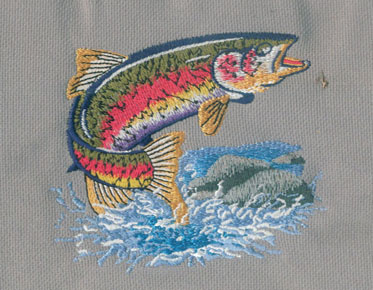What Are Border Stitches In Embroidery Digitizing & Why Do We Use Them?
Embroidery stitches are a sewing
technique used to apply fabric or thread elements to a garment, piece of
fabric, or other surface. Embroidery can be worked on paper, canvas and other
materials to produce a wide variety of creative effects. The following
content also has some reference value for
Eagle digitizing.
What are the differences in the
stitches used in embroidery?
Some basic stitches for embroidery are
running stitch, cross stitch, stem stitch, back stitch, satin stitch, chain
stitch and blanket stitch. Stitches are classified as suture series according
to the nature of the technique used to create individual stitches. Some
embroidered books will include name variations.
What are the differences in the basic
stitches used in embroidery?
Backstitching is one of the easiest
stitches to master.
Split Stitch.
Stem Stitch
Satin stitch
Running stitch.
Chain stitch.
Feather stitch
Why is it important to know the
different stitches?
Knowing the different stitches of
embroidery can give you an idea of what you're actually doing. Embroidery is
very fashionable, so it will change according to people's preferences.
Therefore, learning embroidery stitch also helps to identify niche markets,
target markets and realize their interests.
How do you finish the linen edge?
To clean and finish the edge, sew
straight from the edge about an eighth to a quarter inch, then turn the edge
under the seam and sew straight through both layers. You can also use
double-folded bias tape or special seam finishing tape to close the raw edges.
What is the meaning of the outline
stitch?
Definition of outline stitch:
Embroidery stitch used to outline a design: stitch made by overlapping the back
stitch to form a pattern resembling a rope twist.
Do you make the outline in the
embroidery first?
When to use the outline stitch first.
Some people find it helpful to make outline stitches (i.e. running stitches or
back stitches) before filling the area with embroidery needles such as satin
stitches. This line of stitches can somewhat guide the end of the edge of the
stitch.
Used as a contour stitch or a filling
stitch?
Backstitching is often used for
Outlines and borders, but it's also great for embroidering text or filling
small Spaces.
What basic stitches are suitable for
decorative purposes?
Often used for decorative purposes,
cross-stitch is X-shaped and arranged like tile. The thread loops around the
edge of one or two pieces of fabric. Usually used to attach patches. The thread
runs straight along the fabric, up and down, and there is a distinct spacing
between the stitches on both sides of the fabric.
What is particularly useful for
decorative purposes with longer stitches?
A popular use for decorative stitching
is applique.
What do you call a decorative needle?
Some people refer to decorative
needles as "embroidery needles". While some of these do look like
hand embroidery thread, in the sewing machine world, "embroidery"
always refers to sewing done by an embroidery machine using special wagons and
hoops.
What are decorative seams?
Decorative joints are used for
decorative purposes. The seam is formed by a row of needles (clusters). Folders
help gather structure. A loose fit for dresses and slacks.
What stitches hold the two pieces of
fabric together temporarily?
A glue needle is one of the simplest
stitches in sewing and is used to temporarily hold two pieces of fabric
together. Think of it as a "rough draft" that will be removed later
and replaced with a safer, longer-lasting stitch.


